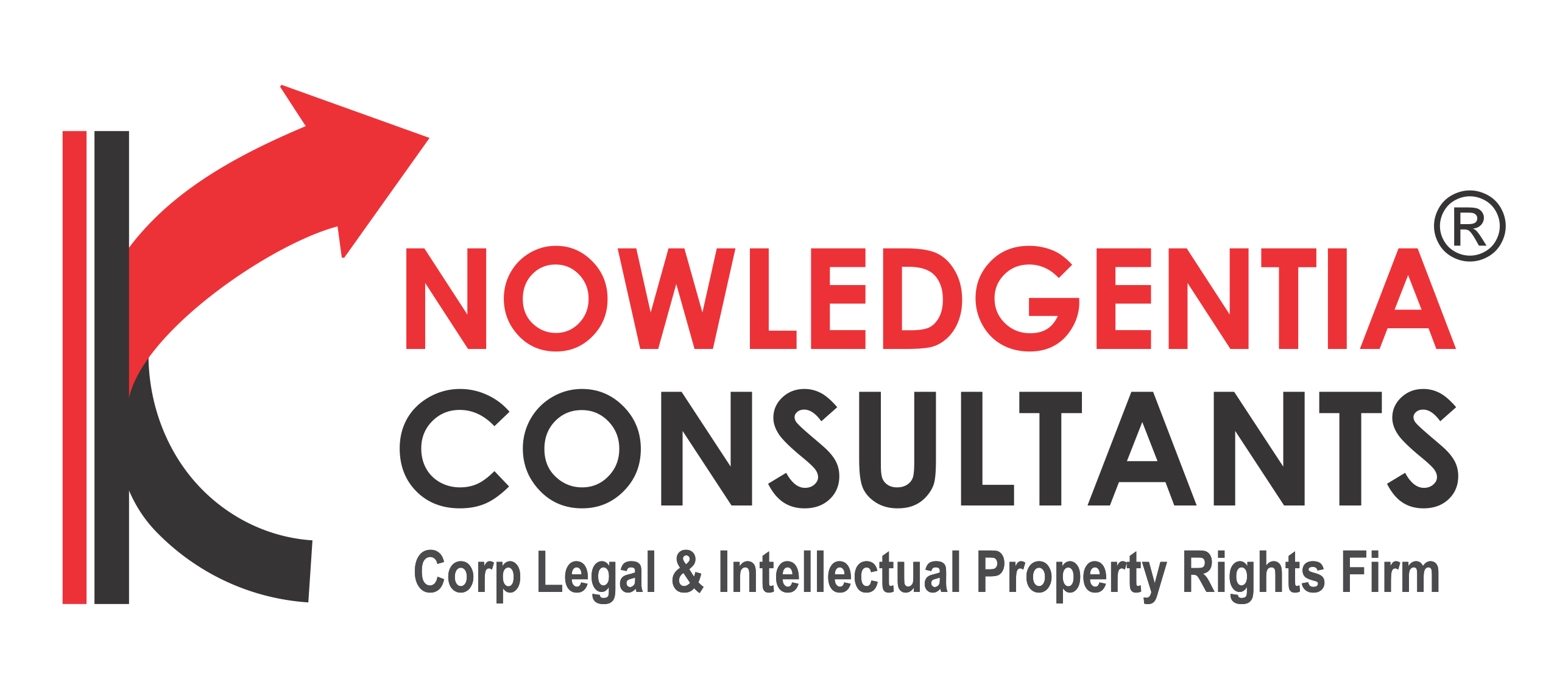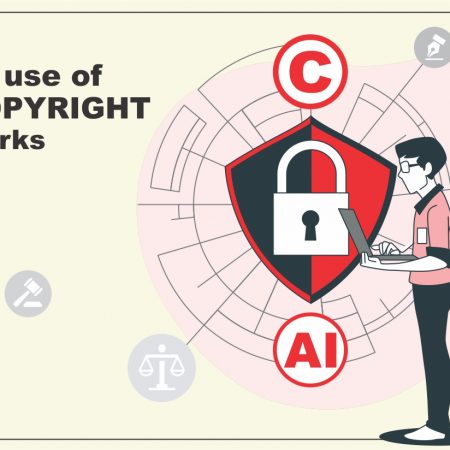TRADEMARK FILING THROUGH MADRID ROUTE
INTRODUCTION
Trademarks play a vital role in establishing brand identity and preventing unauthorized use of distinctive signs. There are a number of International Agreements that aid in the facilitation of IP protection worldwide when it comes to protecting one’s intellectual property. The Madrid Agreement Concerning the International Registration of Marks of 1891 and the Protocol Relating to the Same Agreement of 1989 are especially helpful in obtaining trademark protection across multiple jurisdictions. They form the Madrid System for the International Registration of Marks when combined, making it possible to obtain trademark protection in multiple jurisdictions simultaneously. As a result, any or all Madrid member states can be designated by filing an “international” application, and subsequent registrations will take effect independently in each designated state as if they were filed through the national route.
To streamline the process of obtaining trademark protection in multiple countries, the Madrid System offers a convenient and cost-effective route. For worldwide trademark registration and management, the Madrid System is a simple and economical option. To apply for trademark protection in up to 130 nations, one needs to submit a single international application and pay one set of fees. One can utilize a single, centralized system to modify, renew, or expand global trademark portfolio. Two treaties govern the system of international registration of marks. The Madrid Agreement concerning the International Registration of marks, was adopted in 1891, and it came into effect on 1st April 1996. The Madrid Protocol was adopted in 1989 which came into effect on 1st December 1995 and India became a signatory to the Madrid Protocol in 2013. At Knowledgentia Consultants, we provide all services for Global IPR protection. Now you can effectively protect your brand in several jurisdictions by partnering with best law firm in India.
BRIEF HISTORY
MADRID AGREEMENT
In the year, 1891-The Madrid Agreement for International registration of marks was established. It aimed to create a system that simplifies and harmonizes trademark protection across multiple countries. The Agreement initially included a limited number of countries and provided a centralized mechanism for trademark registration.
In the year 1989, the Agreement was revised to enhance its effectiveness and streamline the registration process further. These revisions incorporated a more efficient administrative framework and facilitated the international registration of trademarks.
MADRID PROTOCOL
In the year 1989, Recognizing the potential of the Madrid Agreement, WIPO initiated discussions to develop an expanded and more flexible system. This led to the creation of the Madrid protocol, which aimed to modernize the Madrid Agreement and increase its global reach.
In the year 1996, The Madrid protocol entered into force providing a framework for the international registration of trademarks.
2002: The United States joined the system.
2008: The Madrid Protocol underwent a major revision to further streamline and simplify the registration process. This revision introduced various improvements such as electronic filing options, the ability to track and manage applications online and enhanced communication channels between the trademark’s offices.
2010: In terms of membership, the Madrid protocol outnumbered the Madrid Agreement. The Madrid Protocol was signed by most nations, making it the most common way to register trademarks internationally.
Today, the Madrid system continues to grow and evolve in the field of trademark protection in multiple countries. The extensive network provides trademark owners with cost effective means of expanding their trademark portfolio globally. The Madrid route has made it easier to centralize trademark filing, management, and renewal processes, which has cut down on costs and administrative work for businesses. It has significantly contributed to the harmonization of trademark practices and the growth of international corporations in intellectual property.
Because of its efficiency and impact, the Madrid system has become an essential part of international trademark law. Its ongoing revisions and improvements aim to further improve efficiency, accessibility, and the user experience, allowing businesses to navigate the global marketplace more easily and confidently. It is essential to conduct a search for existing and pending trademarks in your target markets prior to submitting a national or international trademark application. This will assist you in locating trademarks that are comparable to or identical to yours, allowing you to make an educated decision regarding your application strategy.
HOW TO CONDUCT SEARCH ON WIPO?
- ACCESS THE SEARCH TOOL
The World Intellectual Property (WIPO) has recently introduced the Global Brand Database, which is a new search tool for internationally protected trademarks, applications of origin and armorial bearings, flags and other state emblems, and the names, abbreviations and emblems of intergovernmental organizations. The tool allows free of charge, simultaneous brand-related searches across multiple collections. The Global Brand Database search tool allows you to search for trademarks and brands registered under the Madrid System, including International Registrations and national trademark databases of various member countries. It includes powerful features like search for images by description, auto-suggesting possible matching terms, fuzzy and phonetic term matching, summaries of documents that match in multiple categories, such as graphical representations of countries of origin and designations, and either a comprehensive result list or a quick list of brands.
Madrid Monitor is another tool specifically focussing on International Registrations filed under the Madrid System. It provides access to detailed information on the status, owner and designated countries of each registration.
- 2. CHOOSE THE APPROPRIATE SEARCH CRITERIA: Once the search tool has been accessed, we shall determine the criteria we wish to use for the search, which includes:
- Trademark name
- Trademark owner
- International registration number
- Designated countries
- Classifications
3.REVIEW THE SEARCH RESULTS
After entering the desired search criteria, click the search button to initiate the search. The search tool will generate a list of results and we will have to review the results to find the appropriate trademark or registrations of interest.
- Now after completing the search, proceed for filing of the international trademarks which you will find in the “Madrid System Filing”. The Madrid system will provide guidance on the requirements, procedures and forms necessary for filing an International Registration through the Madrid Protocol.
- After completing the application along with attaching the relevant documents, and the goods and services covered in the trademark, you may submit the application electronically through the online filing portal and pay the relevant fees.
- TRACKING THE TRADEMARK APPLICATION: After submitting the application, we can monitor its progress and receive updates through the Intellectual Property India website.
PROCESS UNDER MADRID PROTOCOL :
Here one can register the mark in several countries which provides a single procedure of trademark filing. Simply the government fees for each foreign country shall be paid in India in one particular currency only i.e Swiss Franc (CHF). The applicant’s PAN card and Aadhar card Logo details Registration as an MSME Trademark application number or trademark registration certificate (if the trademark is pending in India) are the required documents.
DOCUMENTS REQUIRED FOR INTERNATIONAL TRADEMARK REGISTRATION
The Indian Trademark Office requires an international trademark application under Madrid Protocol to be accompanied by the following:
- Power of attorney
- Payment of handling fee
- Payment of international designation fee payable to WIPO.
- A business’s or a registered user’s proof
- The applicant’s PAN card and Aadhar card
- Logo details
- Registration as an MSME
- Trademark application number or trademark registration certificate (if the trademark is pending in India).
- POWER OF ATTORNEY to File an International Application- An attorney may be able to help with the international application filing. But you can only do this after you get the right permission from the applicant on Form TM-48. In accordance with the state, stamp duty must be paid.
- DOCUMENT SUBMISSION -If the foreign nation is a member of the European Union, a second application on Form MM-18(E) must be submitted, and if the nation is the United States, the applicant must specify a second language other than French, German, Italian, or Spanish. The prescribed Form MM-2(E) must be used to complete the international application.
- VERIFICATION
Prior to sending an international application to WIPO, the registrar must check that it satisfies the requirements of the Madrid Protocol. After verification, the WIPO transfers it to the relevant foreign government.
- PUBLIC ENLISTMENT
The worldwide enlistment is subject to the proceeded with viability of the neighborhood enrollment for a time of five years; Otherwise, if the local registration expires or the TM application is rejected, withdrawn, or treated as abandoned within five years, the international registration will no longer be protected.
- WIPO Application
WIPO carefully examines international applications submitted by offices of origin. Typically, the abnormalities are reported three months after the notification date via the office of origin. when the goods or services are accepted for international registration protection in full or in part.
The international trademark is valid for 10 years. After 10 years, you can renew it, if you want to.
WHAT ARE THE ADVANTAGES OF THE MADRID SYSTEM?
- It is economical: In the past, the applicant had to file a country-by-country registration, which took a long time and was expensive due to the high costs of governmental and legal fees associated with filing such an international application on an individual level. However, the Madrid protocol’s standardized form requirements and fee structure have contributed to a 60 percent reduction in international registration fees. This framework sets aside time and cash by documenting one application, as opposed to a heap of public applications.
- Convenient: The international registration process has been simplified and made more convenient for applicants by this system.
- Centralization: The Madrid Protocol is handled centrally. A single application can secure worldwide trademark protection for an individual. A trademark owner can target the nations in which they want their trademark to be protected with this application.
- It stops the many different applications: The Madrid Protocol prevents the chaotic situation that resulted from the filing of multiple applications. It has made it easier to file an international trademark.
- It is simple to make changes: If any information about the trademark owner needs to be changed (for example, name, address, etc.) Then only one document needs to be sent to the International Bureau to change it, and no efforts need to be made at each national office.
- Legal rights: Global trademark registration provides legal protection against third-party trademark infringement. If the trademark has been registered, it is simple to demonstrate the legal right in court. Before taking legal action to stop an infringement, it is essential to confirm that the trademark search—the word, slogan, or logo—is registered.
CONCLUSION
In conclusion, trademark protection can be obtained in a convenient and economical manner through the Madrid Protocol. Due to the system’s strict timelines, however, effective use in India will necessitate more exceptional administration and prompt management of trademark applications. At Knowledgentia Consultants, our team is well versed with all technicalities and procedures of filing applications successfully through Madrid Route. At Knowledgentia Consultants, which is the best law firm in India for Global IPR protection, we encourage a focus on fostering innovation and IP creation, we have been playing instrumental role in empowering start-ups, individuals across jurisdictions to excel in their respective industries. Our mentoring makes IP protection more accessible and affordable .We are your one-stop solution for all kinds of legal, compliance and supplemental matters concerning trademark filing. In case of any query regarding this matter you may email us at info@knowledgentia.com or visit our website -https://knowledgentia.com/.








